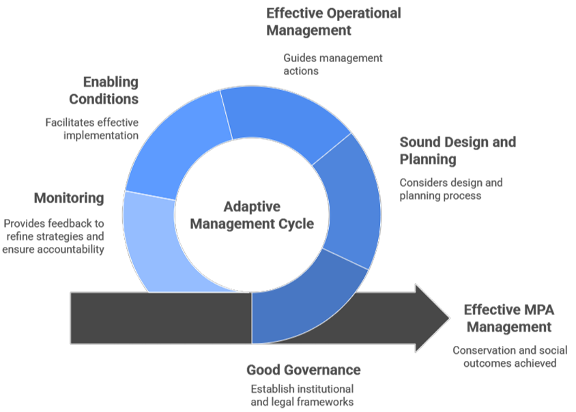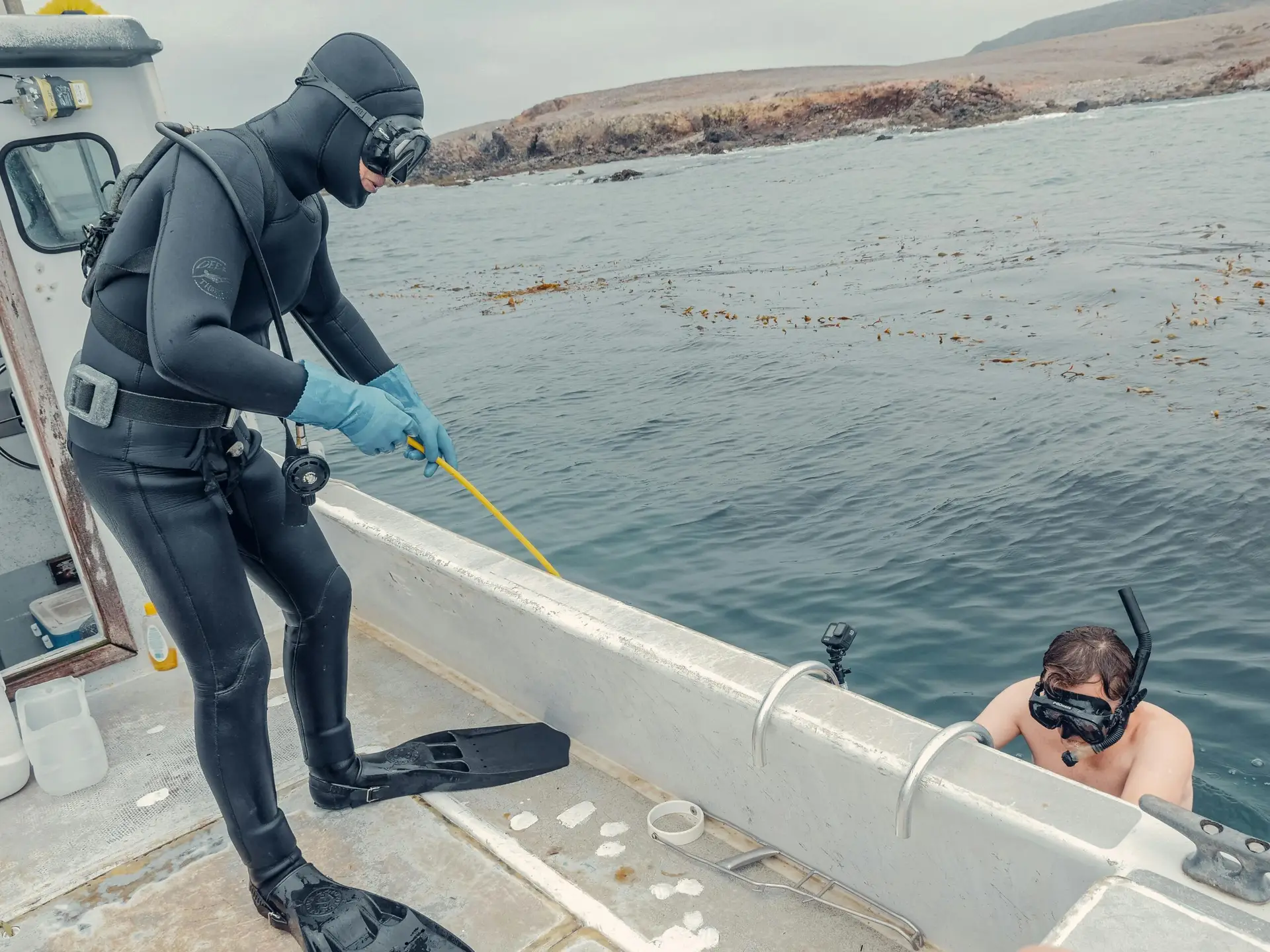What makes Marine Protected Areas effective?
There is ample evidence that effectively managed Marine Protected Areas (MPAs) can deliver conservation benefits as well as positive social outcomes. However, a mere designation of a protected area does not ensure its effectiveness. To deliver tangible benefits, protected sites need good governance, sound planning and effective management operations, which can be facilitated by enabling conditions (Fig 1). A systematic monitoring strategy helps to track progress on these elements and provides feedback for an adaptive management.
Protected Area Management Effectiveness Evaluation (PAME) is a systematic approach to assess how well MPAs are doing on several or all of these aspects. Over the last two decades, a number of tools have been developed across regions and countries to conduct PAME, which makes it challenging for managers to select the tools most suited to their needs. This necessitates the development of guidance on assessing and monitoring conservation effectiveness, including the selection of the most suitable approaches.

Figure 1: Core components of effective management processes to achieve desired conservation and social outcomes within an MPA.
How does Blue Connect contribute?
Work Package 5 (WP5) of Blue Connect is dedicated to developing a system for assessing conservation outcomes and monitoring marine conservation effectiveness. As a first step, Deliverable 5.1 identifies best practices in MPA effectiveness evaluation and monitoring. The analysis is based on a screening and systematic comparison of PAME tools and an interactive workshop with project partners to refine the criteria to be considered when selecting tools. This analysis is complemented by a comparative review of monitoring frameworks, focusing on their potential to support the adaptive management of MPAs.
A systematic approach to successful conservation
Blue Connect has identified key considerations for individual MPAs and MPA networks to select suitable PAME tools.The selection should be guided by the specific assessment purpose, level of detail needed for the assessment, available resources at each site, and further criteria outlined in the document. Best practices for MPA monitoring entail fully integrating monitoring into the management cycle, using clear objectives and indicators.
Building on the identified best practices, Blue Connect will advance now towards developing practical, step-by-step recommendations for selecting tools and developing monitoring frameworks in MPAs. These guidelines will be tested in the Demonstration Sites and be incorporated in the final project Blueprint. Making MPA effectiveness assessment and monitoring tools and frameworks more accessible to managers will support adaptive management and contribute towards MPAs ability to deliver positive conservation outcomes.
Photo by Kindel Media



